Neonicotinoids are America’s most used class of pesticides, found in the vast majority of the nation’s corn crop and nearly half of soybeans. Given such pervasive use, their effects on songbirds—impacting critical functions like metabolism, reproduction, and migration—are troubling.
From the Summer 2022 issue of Living Bird magazine. Subscribe now.
Sixty years ago this summer—in June of 1962—the first of a three-part serialization of Rachel Carson’s book Silent Spring was published in The New Yorker. For most Americans, it was the first time any shadow had been cast on what seemed to be miraculously effective insecticides, like DDT.
I was three years old, and the book had predictably little effect on me—at the time. But a decade later, in 1972, I was a 13-year-old with a passion for birds who had read Silent Spring. Scientists, inspired by Carson, had shown how DDT and its highly persistent byproducts accumulated in the bodies of birds, especially those that sat at the end of long, complex food chains—where the pesticides piled up in fatty tissues, step by step up the trophic ladder. It caused eggshell thinning and reproductive collapse in Bald Eagles and Ospreys, Brown Pelicans, Peregrine Falcons, and Double-crested Cormorants, among others.
“Ban DDT” signs were everywhere in the U.S. I signed petitions asking the newly formed U.S. Environmental Protection Agency to take action. I wrote impassioned essays that I read in front of my bemused middle-school classmates. I made posters for our Boy Scout camporee. And when the EPA banned DDT on June 14, 1972, I celebrated. As an avid young hawkwatcher in the late 1970s and ’80s, I watched the incremental, human-assisted recovery of eagles, falcons, and other birds as environmental DDT levels slowly fell. Now, when so many other groups of North American birds are in crisis, raptors by and large are thriving, their numbers up by nearly 80% since 1970.
Problems with DDT and related compounds spurred the chemical industry to develop new generations of insecticides—first a class known as organophosphates, and most recently a class called neonicotinoids, or “neonics” (see our primer on insecticide classes). Neonics are generally considered less dangerous to vertebrates and can be applied as a seed coating to, say, a kernel of corn. Absorbed into every part of the growing plant, from its roots and stem to its windblown pollen, systemic insecticides like neonics make the entire mature plant toxic to any insect that nibbles it.
At first glance it might seem that the advent of neonics, seemingly targeted for insects, allowed for an overall reduction in pesticide use on the landscape. In terms of sheer quantity, the amount of insecticides applied on U.S. farmland has actually fallen by 40% since the 1990s—but that’s not the whole story. With neonics, the toxicity of pesticides to invertebrates has increased dramatically, and those agricultural figures do not include the largely untracked application of residential lawn and garden insecticides. Nor do they include the single biggest use of neonicotinoids, as those handy seed coatings. Because of a loophole in federal pesticide regulations, seed coatings are not even considered “pesticides,” and their use is neither tracked nor directly regulated by the EPA. Yet the vast majority of corn planted in the U.S., and a significant percentage of soybeans and many other crops, are treated with neonics.
There isn’t the kind of obvious link from today’s pesticides to avian population declines that there was with DDT. And yet, neonics have a well-documented rap sheet.
Today pesticides and their environmental effects are in the news to an extent we haven’t seen since those “Ban DDT” days half a century ago, largely because of concerns that neonicotinoids are harming pollinators like bees and butterflies. But it’s not just a concern for insects; if swallowed, a neonic-treated kernel of corn is enough to kill a jay-sized songbird, and as few as four pinhead-sized canola seeds, treated with neonics, can cause a host of sublethal effects in a sparrow-sized bird, interfering with avian metabolism, migration, fat deposition, and reproduction. Because most of the insecticide applied to a seed comes off in the soil—and because neonics are both highly persistent in the environment and easily soluble in water—they are increasingly ubiquitous in many rivers, streams, and lakes, harming populations of emergent insects on which aerial insectivores like swallows, swifts, and flycatchers depend. Not surprisingly, many ornithologists see a link between pesticide use and the fact that grassland birds, the group that may be most directly exposed to agricultural pesticides, have declined by more than half since 1970.
The tricky part is proving it.
“We got really lucky [with DDT]. That was a really easy one [to prove],” said Dr. Ken Rosenberg. Recently retired after a long career as a conservation scientist at the Cornell Lab of Ornithology, Rosenberg was the lead author on a blockbuster 2019 Science paper documenting the loss of 2.9 billion birds in North America since 1970. Rosenberg and his coauthors called out pesticides as a possible factor in the loss of a third of the continent’s avifauna.
There isn’t the kind of obvious, one-to-one link from today’s pesticides to avian population declines that there was with DDT. And yet, neonics have a well-documented rap sheet of direct and indirect negative effects on birds.
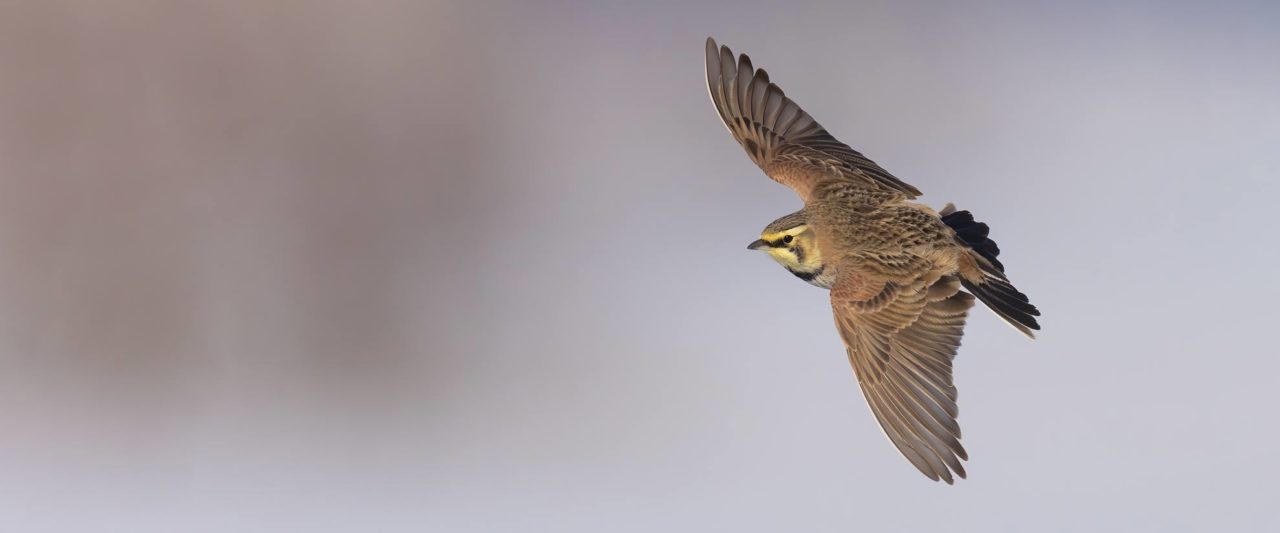
Pinpointing Pesticide Effects
With DDT, there was a very clear, replicable, easily isolated, physiological effect: DDT (or more precisely, its breakdown metabolite DDE) interfered with a female bird’s calcium metabolism, causing eggshell thinning and dying or infertile eggs. Modern pesticides, on the other hand, may affect birds directly and indirectly in many varied ways, each one interwoven with other forces. Picking an indisputable signal from among the noise is very difficult, Rosenberg said: “It’s not that I’m doubting it, I’m just talking from the perspective of how can we, as scientists, get to the bottom of this?”
What effect are pesticides, especially insecticides, having on wild birds? To try to get a handle on the question, I spent months reading literally hundreds of scientific papers, reports, and reviews touching on dozens of ways that pesticides and birds intersect—the chemicals’ direct toxicity; their sublethal impacts on critical avian functions like metabolism, migration timing and orientation, reproduction, and the ability to evade danger; and how pesticides may be hollowing out the food web on which billions of insectivorous birds (including those that feed insects to their chicks) depend.
I spent most of my career trying to get governments and environmental groups interested in the fact that we were killing so many migratory birds with pesticides.
Dr. Pierre Mineau, Carleton University
I learned about the ubiquity of some modern pesticides, although determining exactly how much is being used can be hard to say. The U.S. Department of Agriculture, in a report on pesticide use on 21 selected crops, found that American farmers in those sectors used 516 million pounds of insecticides in 2008—but that doesn’t include all crops, nor does it include millions of pounds of lawn and garden chemicals, often applied by homeowners who may not read or follow label directions. And it leaves out what is likely the single greatest use of neonics—as seed treatments—which, in an ultimate irony, may provide little crop yield benefit to farmers anyway.
I spoke to experts in the U.S., Canada, Europe, and Australia, including ecotoxicologists who have been working on issues surrounding birds and pesticides for many decades, and who recalled a time not so long ago when almost no one was paying attention to the environmental toll of insecticides because people assumed the problem had been solved with the banning of DDT. I reached out to activists and government regulators, and to industry representatives (who did not respond to repeated requests for comment), exploring the policy decisions that have shaped the current pesticide landscape, as well as how that may change.
To get started, I needed a little history of the science of pesticide impacts on birds, post-DDT. For this I turned to Dr. Pierre Mineau, who for more than 40 years has been in the trenches on bird–pesticide issues. Now a private consultant and adjunct professor at Carleton University in Ottawa, Ontario, Mineau was a senior research scientist with Environment Canada and, before that, the Canadian Wildlife Service. One colleague described him to me as the Lone Ranger of research on pesticide effects on birds and other wildlife, because he was working on those questions when few others bothered, including a landmark 2013 report (coauthored with Cynthia Palmer, who was then with the American Bird Conservancy) on the effects of neonicotinoids on birds.
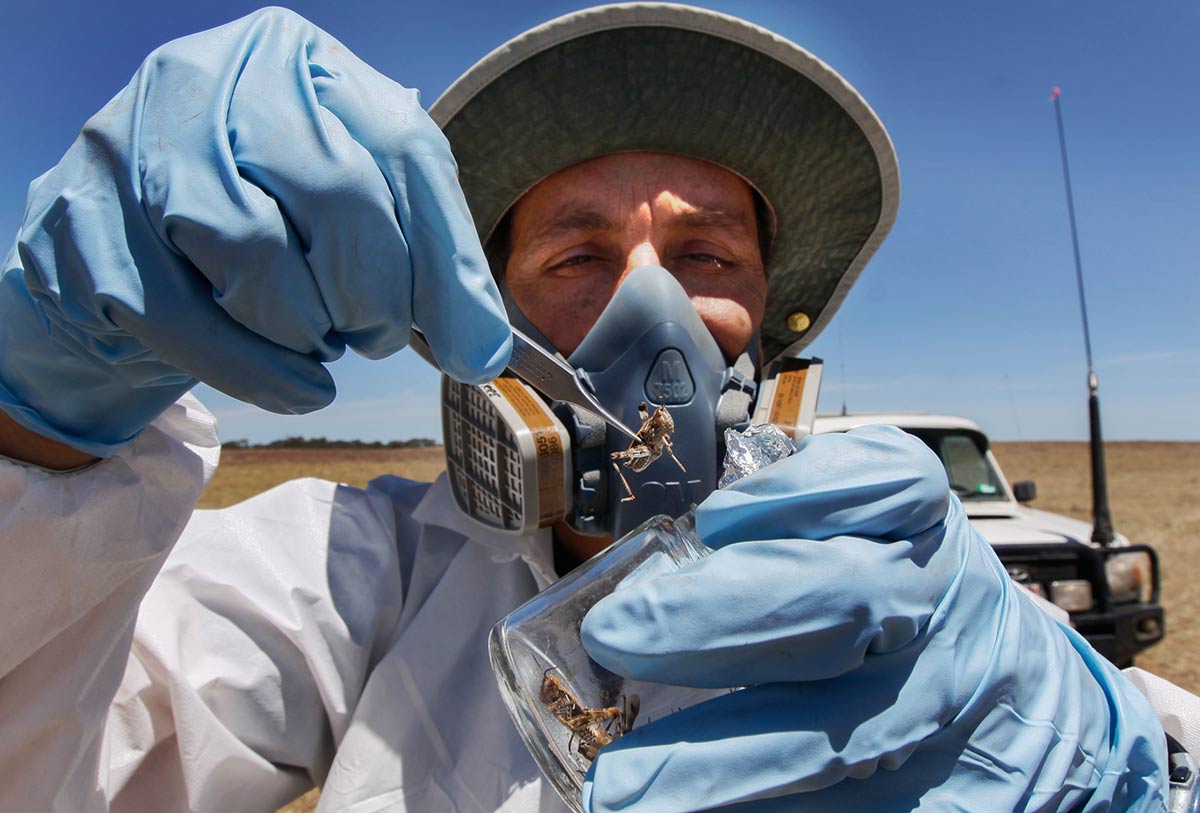
“I spent most of my career trying to get governments and environmental groups interested in the fact that we were killing so many migratory birds with pesticides,” he said.
Mineau told me that underlying much of the history of insecticides, and their impact on wildlife, is a question of scale.
“DDT’s not really acutely toxic … [but] it bioaccumulates at the top of the food chain, so it became a real problem because of just the scale of the use, the amount of material being dumped in the environment, year in and year out,” Mineau said. That, he and other pesticide experts kept telling me, has been a big part of the historical problem with insecticides. None of them by definition are “safe”; there is a risk/benefit equation at play with every compound and every use. But rather than using them in a limited way, just where and when really needed, they have tended to be applied indiscriminately.
By the 1960s and ’70s, organochlorines like DDT were increasingly being detected in human breast milk, an indication of their insidious tendency to climb up the food web. By then, newer classes of insecticides known as organophosphates (or OPs) and carbamates were moving into the pipeline.
“The regulators were so desperate to move away from bioaccumulating products, the mother’s milk effect, that they basically embraced OPs and carbamates without giving a second thought to just how acutely toxic they were, and actually much more [so] to birds than mammals,” Mineau said.
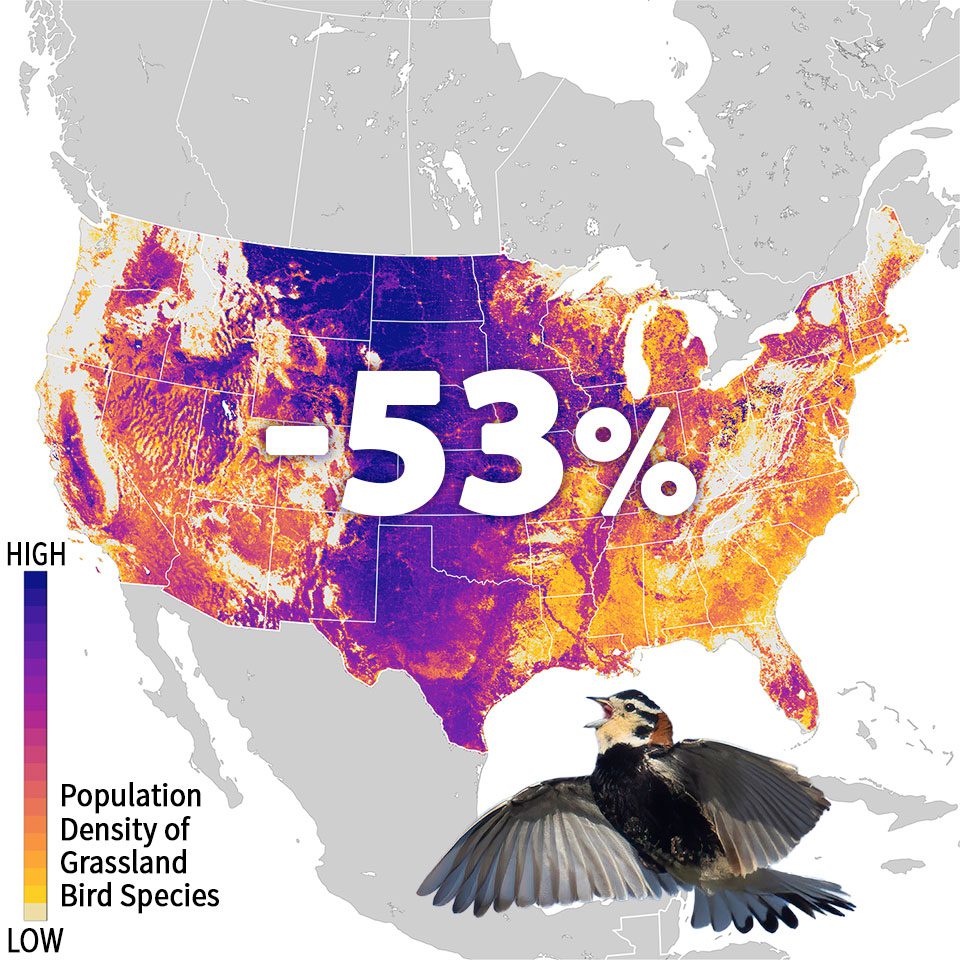
By the 1980s and ’90s, organophosphate and carbamate pesticides were facing ever-stronger headwinds, Mineau explained. Insect pests were developing resistance to them, he said, and there was increasing evidence of human health problems. Pesticides like granular carbofuran, one of the especially toxic carbamates, were also implicated in some enormous bird kills, like more than 2,000 Lapland Longspurs found dead in 1984 in Saskatchewan. By extrapolating from field studies in Iowa and Illinois, Mineau estimates that in the 1980s, granular carbofuran alone caused the deaths of 17 million to 91 million songbirds every year across the Midwestern corn belt. An influential 1992 study by a team from the Cornell University College of Agriculture and Life Sciences put the toll at 67 million birds killed on U.S. croplands every year by pesticides, with a note that “this estimate is conservative because secondary losses to pesticide reductions in invertebrate-prey poisonings were not included.”
Human health concerns spurred the federal government to more strictly regulate—and in some cases even ban—these post-DDT pesticides. Granular carbofuran was limited in the U.S. in 1991, and a restriction on the residues on food was instituted in 2009. The Food Quality Protection Act of 1996 caused a general reduction in organophosphates employed for domestic use and agriculture.
But restricting these pesticides only led industry to invent others.
“All of a sudden, when they’re looking for something else, neonics came along,” Mineau said.
The first neonicotinoid to be approved was imidacloprid, introduced in 1994; in the years since, four more neonics have been brought to market in the U.S. Neonics interfere with an insect’s nervous system, causing paralysis and death. They are, in a phrase I heard repeatedly from the scientists to whom I spoke, “exquisitely” toxic to insects. Dr. Dave Goulson, whose research at the University of Sussex has focused in large measure on the impact of insecticides on bumblebees, told me neonics are roughly 7,000 times as toxic to insects as DDT.
Regulators at the EPA and similar agencies around the world did not, in fact, realize just how toxic neonics would prove to be when the first one, imidacloprid, was initially under review. That’s because one of the model organisms against which prospective insecticides are tested in the lab is Daphnia magna, a tiny freshwater crustacean more commonly known as a water flea.
“They’re actually quite sensitive to a lot of pesticides,” said Dr. Christy Morrissey, an avian and aquatic ecotoxicologist at the University of Saskatchewan, “but we know now that [Daphnia] are actually uniquely insensitive to neonicotinoids—in fact, they’re 100,000 to a million-fold, like six orders of magnitude, less sensitive than mayflies or midges and insects that are ecologically relevant for a lot of other species.”
Those regulators also made a lot of assumptions, Morrissey said—assuming, for instance, that birds wouldn’t eat the seeds coated with neonics because those seeds would be buried at planting. But as anyone who has walked the edges of a newly sown crop field has seen, there’s always spillage and loose, brightly colored treated seed, especially at the ends of rows where the machinery makes a turn.
Over the last three decades, neonics have become utterly ubiquitous. Imidacloprid is the most commonly used insecticide in the world; it and other neonics are used not just in agriculture but in many residential turf and garden products, and even home pet treatments for fleas and lice.
The biggest use, however, is those agricultural seed coatings. One study estimated that at least 79% of the corn planted in the U.S. in 2011—and perhaps nearly 100%, totaling around 92 million acres—was treated with neonics. That same study estimated neonic-coated seeds were used on up to 44% of the area planted to soybeans. Neonic coatings are also added to a number of other crop seeds, like wheat and cotton. In practice, Morrissey and other experts said, it’s often impossible for a farmer to find uncoated seeds for certain crops like corn even if they want to plant them, especially because half a dozen of the largest pesticide manufacturers now own most of the seed distributors.
More on Pesticides and Policy
Most disturbing of all, the actual quantities of neonics involved are essentially unknown. In the U.S. this is due to a loophole in federal regulations known as the “treated article exemption,” under which pesticide-coated seeds are not considered “pesticides” at all, and their use is thus not tracked by the EPA or most state governments. A lawsuit filed late last year by the Center for Food Safety and the Pesticide Action Network seeks to force the EPA to treat neonic-coated seeds as pesticides.
“No one envisioned that [neonics would] be used on virtually every single crop across massive landscape levels, year after year, that they would have this persistence profile that was particularly problematic,” Morrissey said. “I think it was just shortsightedness.”
According to Morrissey, exchanging OPs for neonics was a bad deal.
“Oh yeah. No question,” she said. Morrissey believes that neonicotinoids’ persistence, and the ease with which they move through aquatic systems, make them more of an overall environmental danger than the highly toxic organophosphates they largely replaced.
It is still worth noting, however, that health experts have long expressed deep concerns about the effects of chronic OP exposure on people, especially children. After reaching a peak in 1995, organophosphate use began a steady decline as they were eventually phased out—just as farmers began to blanket America’s heartland with another class of insecticides that were “exquisitely” toxic to an array of invertebrates, and applied in a manner that has largely flown under the regulatory radar.
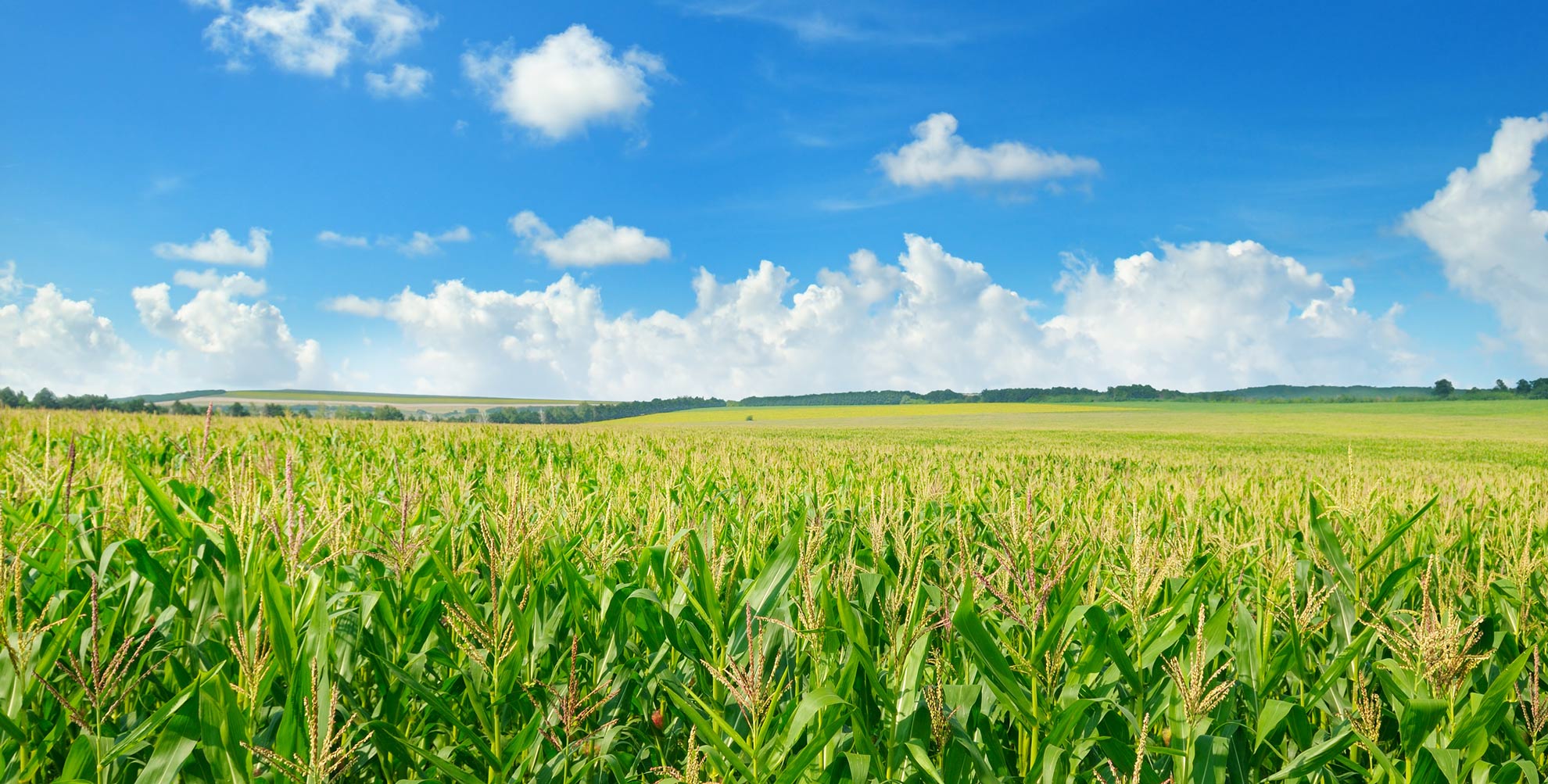
One study from 2011 estimated that at least 79% of the corn planted in the U.S.—and perhaps nearly 100%—was treated with neonics.
Underestimating Neonics
Neonics have been tied to a host of problems involving pollinators. Beyond their direct toxicity, these neural receptor–disrupting chemicals have been shown to cause problems with navigation, flight, taste sensitivity, and reproduction in bees, and have been implicated (along with parasites and viruses) in colony collapse disorder in honeybees. For these reasons the chemicals have been the focus of intense controversy and growing calls for their restriction or banning. In 2018 the European Union banned the use on field crops of three common neonics—imidacloprid, clothianidin, and thiamethoxam—although a number of exemptions have been issued allowing some degree of continued use. In the U.S., those same three compounds are currently under registration review by the EPA, a once-every-15-years process that allows the agency to weigh the risks and benefits of established pesticides. A final decision is expected later this year.
When they were first introduced, neonics were thought to be a class of pesticides with lower acute toxicity to vertebrates, although concerns were voiced early on about their persistence and the ease with which they move into aquatic systems.
“We haven’t seen that level of persistence since the DDT era,” said Morrissey, whose lab has published some of the most important research on the effects of neonics on birds. “Neonics persist in the soils for years, they’re readily moving into the water because they’re water-soluble, and then they impact the whole food chain, all the beneficial insects like [emergent] aquatic invertebrates that aerial insectivores rely on.”
Aerial insectivores—the group of birds like swallows, nightjars, and flycatchers that eat flying insects on the wing—have declined by 32% since 1970. But for research on the direct impacts of neonics on birds, the Morrissey Lab at the University of Saskatchewan chose two species that are easier to study and known to forage for spilled grain in farm fields: the White-throated and White-crowned Sparrows.
We haven’t seen that level of persistence since the DDT era.
Dr. Christy Morrissey, University of Saskatchewan
A pair of studies by Morrissey’s former postdoctoral fellow Margaret Eng (along with Morrissey and ornithologist Bridget Stutchbury at York University in Toronto) found that captive White-throated Sparrows dosed with imidacloprid, at a concentration equivalent to just four tiny canola seeds treated with the neonic, suffered effects over three days—including lethargy, loss of motion control, significant declines in fat storage and body mass, and failure to orient correctly for migration [see “Neonic” Pesticides Interfere with Sparrow Migration, Studies Show, Spring 2020].
A second experiment, this time with tagged, free-living White-crowned Sparrows given half the dose of imidacloprid as the original experiment, found the birds experienced “rapid reduction in food consumption, mass, and fat.” When the scientists monitored the movements of these dosed sparrows via the Motus Wildlife Tracking System, they found that departures for the continuation of spring migration were delayed an average of more than three days compared with control birds.
In 2015, Morrissey joined with Mineau and lead author David Gibbons of the Royal Society for the Protection of Birds to conduct a review, published in Environmental Science and Pollution Research, that synthesized more than 150 studies on the impacts of modern-day pesticides to birds. The review collected the best-available science on the neonics imidacloprid and clothianidin. They noted that imidacloprid, the most widely used neonic, shows “moderate to high toxicity” to birds under EPA definitions, especially smaller-bodied species. It also listed a litany of other ills, from testicular abnormalities to eggshell thinning and stunted embryo size, reduced survival and developmental problems in chicks, in addition to the issues Morrissey’s lab had shown with sparrows.
An increasing body of research around the world speaks to the near-universality of neonics in the environments of farmland and grassland birds. Scientists in Spain found a common neonic (along with seven different fungicides) in the stomach contents of a third of the Red-legged Partridges they tested, while in Switzerland, neonicotinoid residues were found on the feathers of 100% of House Sparrows that were tested, regardless of whether the samples were collected at conventional or organic farms. In 2018, a team in Finland announced that neonics were present in the blood of European Honey-buzzards, the first diurnal raptors found to be carrying the chemicals. And right here in North America, that Morrissey Lab study in Ontario detected neonics in the bloodstreams of nearly 80% of White-throated Sparrows caught in the wild.
It’s been much harder to draw a straight line from pesticides to the documented declines in global bird populations. A lot of the evidence is circumstantial, clouded by a host of interlocking and often related issues like habitat loss and agricultural intensification, but nevertheless pretty damning: Insecticides like neonics are increasingly good at killing invertebrates; they cause physiological and behavioral problems in birds that are exposed to them; they are being used at astounding scale across tens of millions of acres of farmland; many are highly persistent in the environment; and the worst bird declines have been in farmland and grassland habitats where they are used most heavily (and where multiple classes of insecticides have been in use for many decades).
One of the clearest connections between bird populations and pesticides came from the Netherlands, where scientists were able to correlate concentrations of the neonic imidacloprid in surface water with large declines in aquatic invertebrates—and, via the Dutch Common Breeding Bird Monitoring Scheme, corresponding declines in bird numbers.
“Higher concentrations of imidacloprid in surface water in the Netherlands are consistently associated with lower or negative population growth rates of passerine insectivorous bird populations,” the authors concluded, finding average annual declines of 3.5% among a group of species that included Yellowhammers, Meadow Pipits, and Mistle Thrushes.
Similarly, an analysis published in Nature Sustainability in 2020 by scientists from the University of Illinois Urbana-Champaign and Auburn University combined North American Breeding Bird Survey results and county-level data on neonicotinoid use from 2008 to 2014 and found annual decreases of 4% and 3%, respectively, for grassland and insectivorous birds, with much smaller decreases for non-grassland and non-insectivorous species.
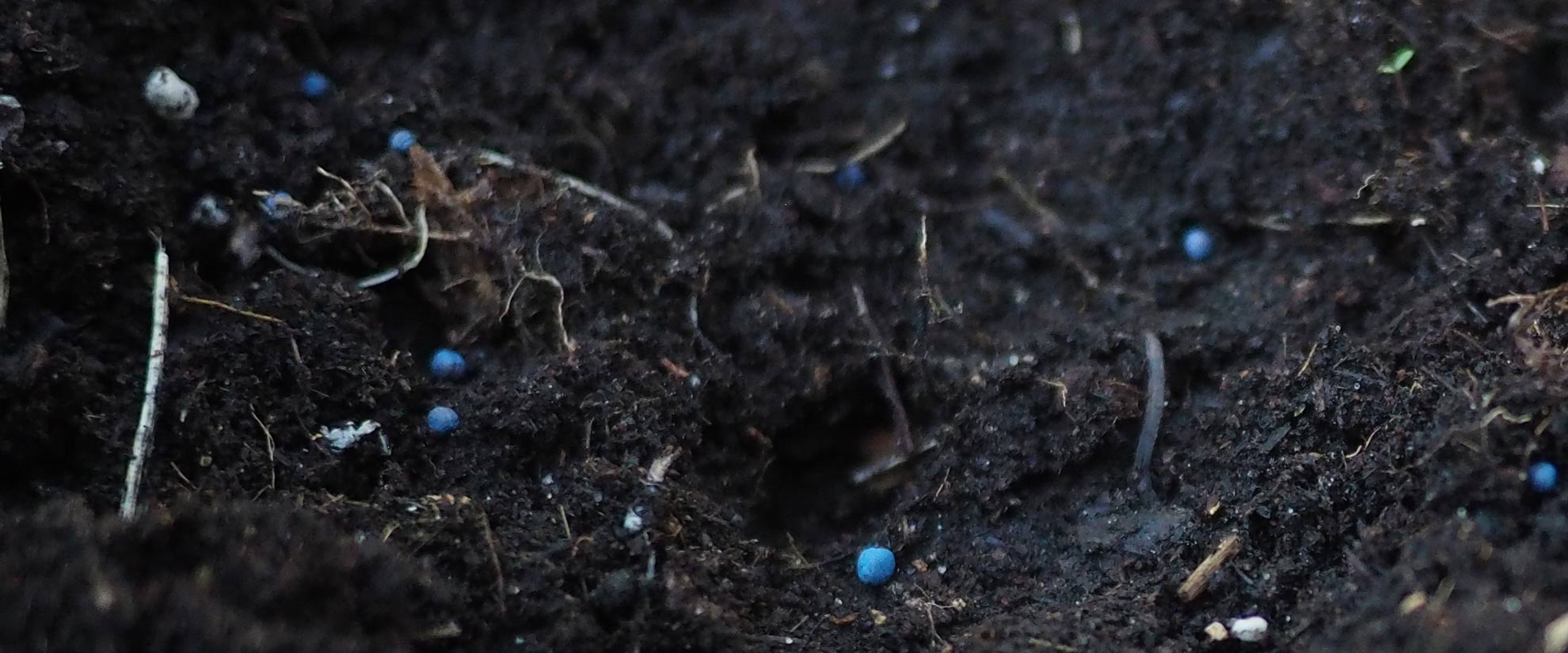
A Very Persistent Problem
Dave Goulson, the pollinator expert in the U.K., thinks part of the danger with neonics is that they’re trending, both as a pesticide and a bogeyman.
“I think there is a danger that neonics have become an obsession with the environmental movement, and there is a danger of losing sight of the bigger picture,” he told me. “There are many other issues affecting insects, many other pesticides that are probably harmful, maybe just as bad as neonics … but some people seem to think we just need to ban [neonics] and all of our problems will go away, which is just nonsense.”
For one thing, a ban on neonics won’t even make neonics go away, at least not quickly. Only 2% to 20% of the neonic seed coating is taken up by the plant; the rest remains in the soil. Francisco Sanchez-Bayo, an ecotoxicologist at the University of Sydney, Australia, was among the first to show in field studies how enormously toxic neonicotinoids are to aquatic invertebrates. Sanchez-Bayo told me that the persistence of neonics in the soil means that even where they have been at least partially banned, as in the E.U. and U.K., the substances will continue to leach into waterways for decades. What’s more, their metabolites—the breakdown compounds created by, say, microbial action—can be at least as, or even more, toxic than the parent chemicals.
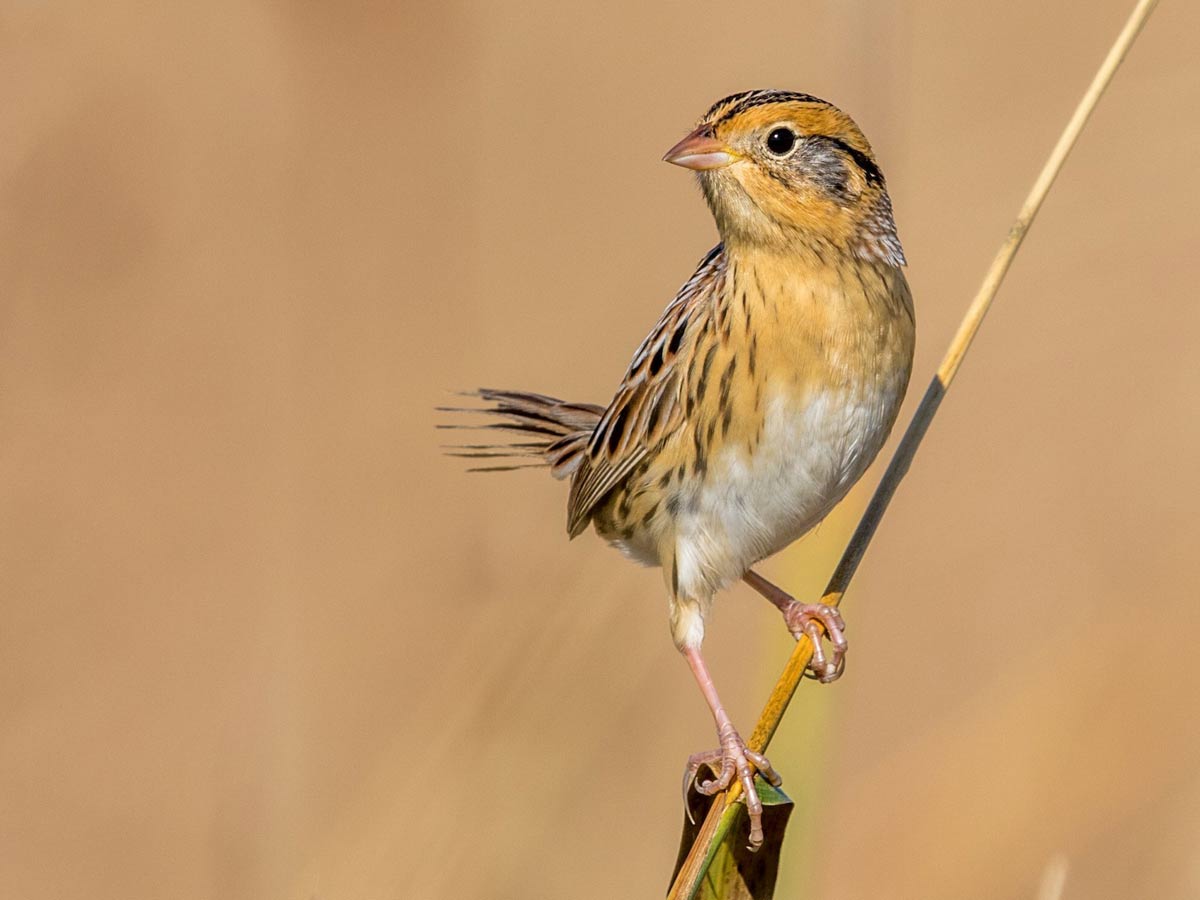
And yet despite all this risk of toxicity, there’s a growing body of evidence suggesting that neonics—at least in their almost universal use as seed treatments—provide little direct benefit to farmers. A 2020 report by Cornell University’s College of Agriculture and Life Sciences found that, while neonic sprays and direct soil applications provide important crop protection from five kinds of pests for which few other alternatives exist in the state, the “routine use of neonicotinoid-treated seeds does not consistently increase net income for New York field corn or soybean producers.” Even when compared with plots using no insecticides at all, 89% of the field trials in the Cornell study saw no increase in corn yield using neonic-treated seeds. Other studies, including one by the EPA, have found a similar lack of consistent yield benefit for soybean farmers.
“This is the piece that’s almost criminal. It’s the fact that these treatments aren’t providing tangible economic benefits to the people who are using them,” said Dan Raichel, acting director of the Pollinator Initiative at the Natural Resources Defense Council. “Economically it’s a wash. So we have this massive, minimally regulated use of a pesticide that is harming whole ecosystems … and on top of that, no one’s benefiting from it, except maybe the chemical companies that are selling these seeds at a premium.”
And neonics aren’t just a problem in farm country. Goulson’s work in the U.K. bears this out: He and his students found imidacloprid or the non-neonic pesticide fipronil (or both) in every one of the 20 English rivers they tested, with the heaviest concentrations just downstream from water treatment plants. This, Goulson argues, strongly suggests they’re coming from home flea treatments for pets.
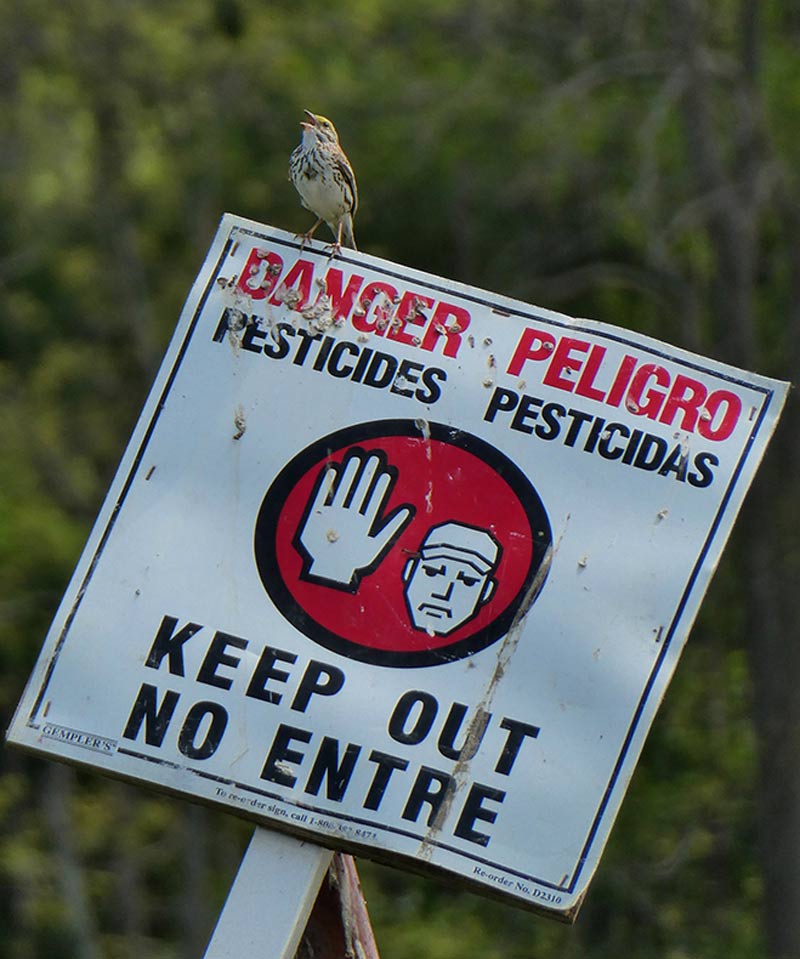
In the U.S., a number of backyard lawn products include neonics, which may be why Emilie Graves, a doctoral student at the University of California-Davis, found that nearly 70% of Anna’s and Black-chinned Hummingbirds (mostly from urban and suburban areas, salvaged from window kills, or which had died at rehab centers) had one to four neonic or carbamate insecticides on their feathers or in their tissues.
Some states have begun enacting bans or limits on neonics, at least in non-agricultural settings. Last year Maine directed its state Board of Pesticide Control to propose rules banning four common neonics for outdoor residential use. In January 2022, New Jersey went a step further by classifying all neonicotinoids as restricted-use pesticides available only to licensed applicators, and in addition to residential uses, banned them on commercial properties including golf courses. In 2019 Vermont similarly restricted outdoor uses of neonics, aside from agriculture, to certified applicators.
Given the ubiquity of neonics in agriculture, such action might be seen as nibbling around the edges. But in 2021, New York’s State Senate passed the Birds and Bees Protection Act, a bill that, in addition to banning neonics for residential use, would for the first time in the U.S. prohibit the sale of neonictreated seeds. The bill passed the New York State Assembly this spring, but it required additional action by the State Senate.
Quebec, on the other hand, took a different but highly effective approach to regulating neonics. Instead of banning neonic seed treatments, it requires farmers to get a prescription from their local agronomist before using treated seeds. According to the Quebec Ministry of the Environment, in 2015, before the prescriptions were required, 100% of corn seed and half of soybeans planted in the province were treated with neonics; by 2019, that had dropped to 2% and 1%, respectively.
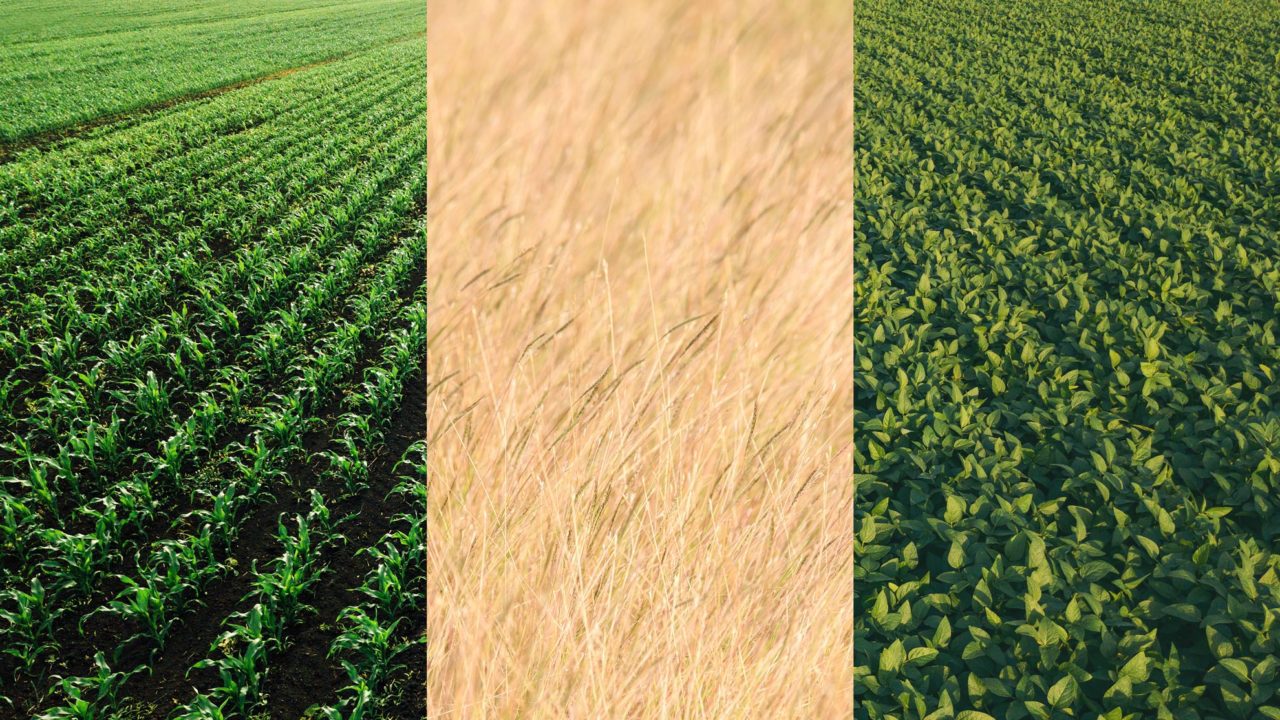
A Revolving Door
Beyond neonics, the bigger problem, said the scientists and conservation activists I spoke with, is the seeming “capture” of the pesticide regulatory system, in both Canada and U.S., by the chemical industry and its well-funded lobby, with a revolving door between regulators and the regulated that has hampered meaningful change.
“Ultimately, it boils down to the fact that we have a federal pesticide law, and an agency that administers it, that basically favors the issuance of new pesticide registrations without adequate analysis of their potential impacts,” said Peter Jenkins, senior counsel for Public Employees for Environmental Responsibility, a group that is a frequent critic of federal pesticide oversight. (My repeated attempts to solicit a response to a number of questions about pesticide use and policy from CropLife America, the U.S. pesticide industry trade group, were unsuccessful.)
Christy Morrissey, the ecotoxicologist at the University of Saskatchewan, is concerned about the lack of government oversight as seed companies morph their treated-seed products by adding more and more pesticides to each seed.
“So we’ll see a neonic, plus one of the newer diamides [a neonicotinoid replacement], plus three fungicides on them,” Morrissey said. “They’re like Whoppers.”
Because such combinations of compounds may create synergistic effects beyond their individual actions, she believes manufacturers should be required to test such combinations. But as of now, U.S., Canadian, and European regulators only require testing data on individual active ingredients when initially registering them. And the birds on which pesticides are routinely tested—normally Northern Bobwhites and Mallards, which are easy to raise in captivity—may not reflect how any given chemical affects smaller species, such as warblers and sparrows, as her lab’s fieldwork suggests.
Ken Rosenberg, the retired Cornell Lab conservation scientist, said it should be a priority for scientists to dig deeper into how pesticides and other factors are driving bird declines.
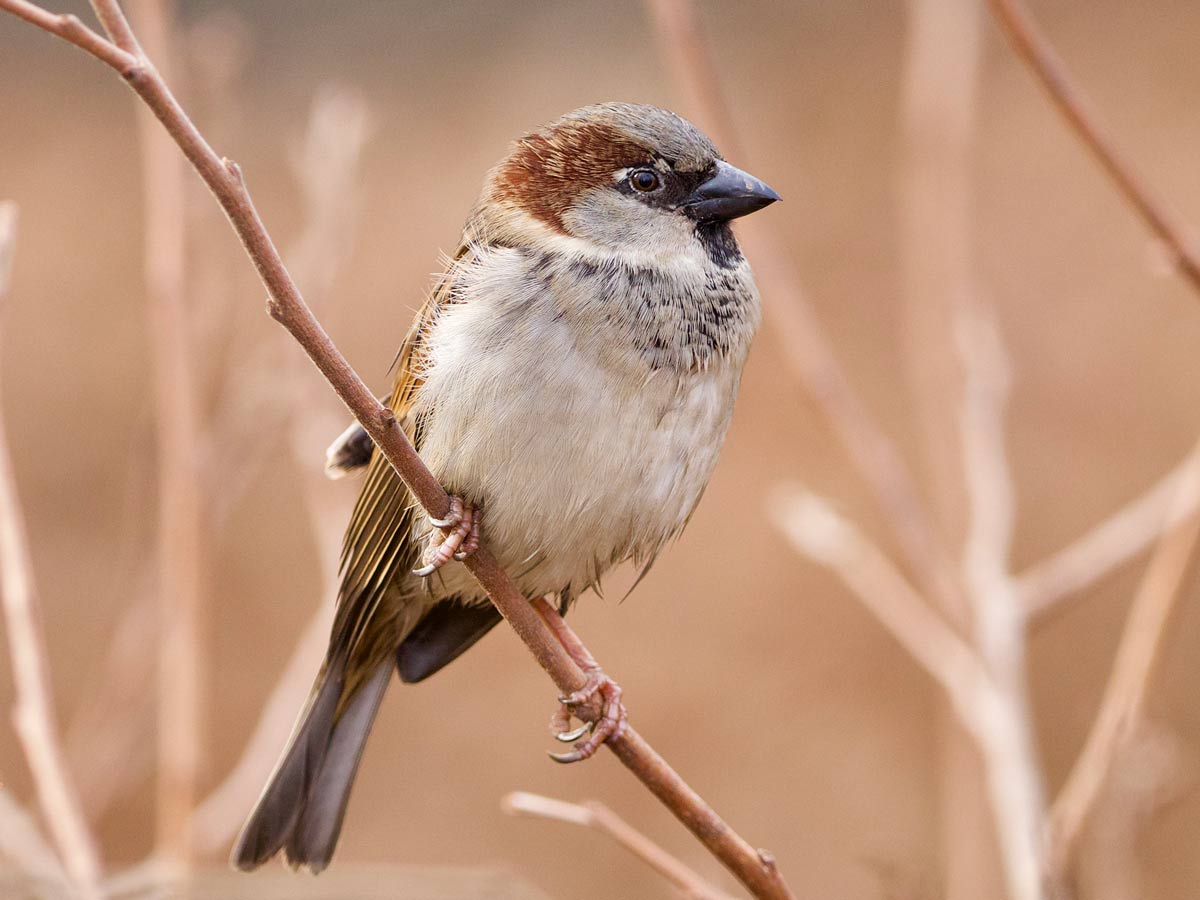
“How can we, as scientists, get to the bottom of this?” he said. “It’s this pervasive, really, really gnarly problem. … [But] we can’t let up on discovering the causes of the decline, because if we don’t know what it is, we can’t know that we’re acting in a way that’s going to restore populations.”
Getting the data needed to identify those causes at global scale represents a huge challenge, Rosenberg said. But he did propose one possible approach, relying on a species that rarely gets the limelight as an avian hero: the House Sparrow.
Passer domesticus is found, native or introduced, on every continent except Antarctica, in urban and rural environments, and its numbers have been crashing in many places. More than 330 million House Sparrows have been lost in North America since 1970, and more than 150 million House Sparrows have disappeared in Europe since 1980.
“I think House Sparrow would be a great global model species since it’s in decline, [and] it is associated with agriculture,” Rosenberg said. “So use them as a bio-sentinel species.”
Rosenberg envisions the large-scale, global collection of data on pesticide levels in House Sparrows across every possible habitat type, on every continent where they’re found.
It would be ironic if the House Sparrow—an invasive non-native species in the U.S. that’s reviled for attacking beloved bluebirds and martins in their nest boxes—laid the golden egg of direct evidence for pesticide impacts to birds.
“The House Sparrow could be our canary in the coal mine,” Rosenberg said.
Writer and researcher Scott Weidensaul is the author, most recently, of the New York Times bestseller A World on the Wing.

